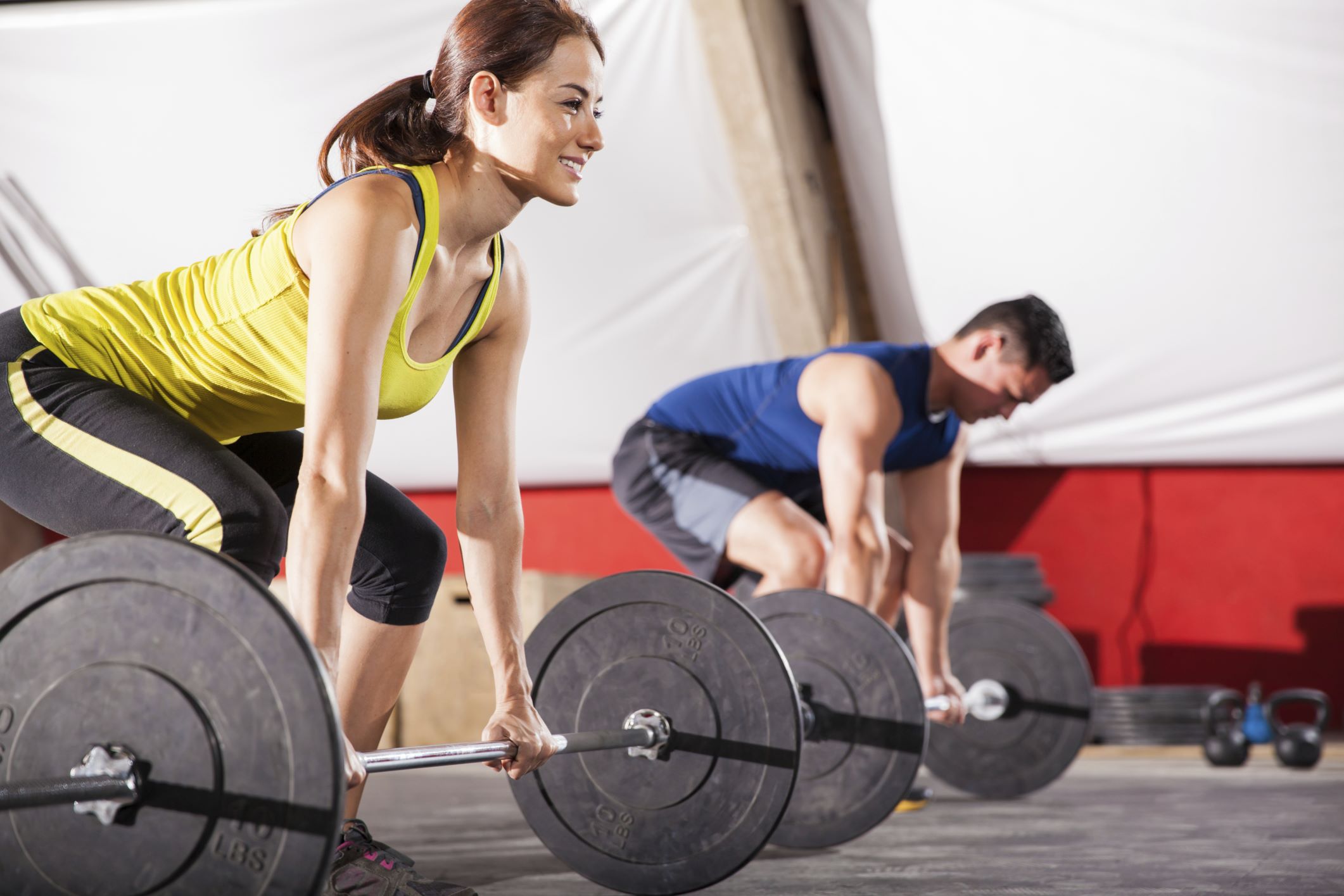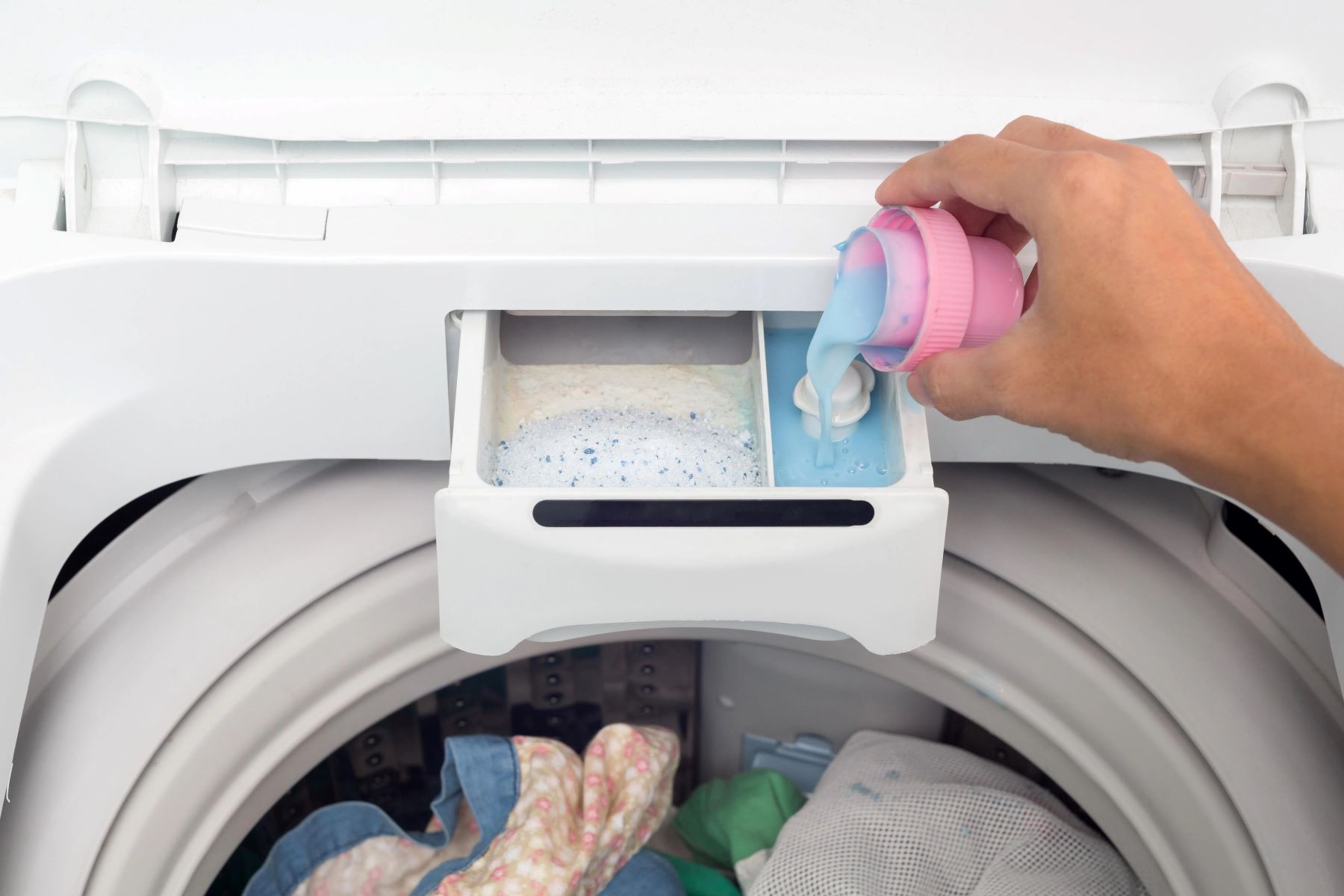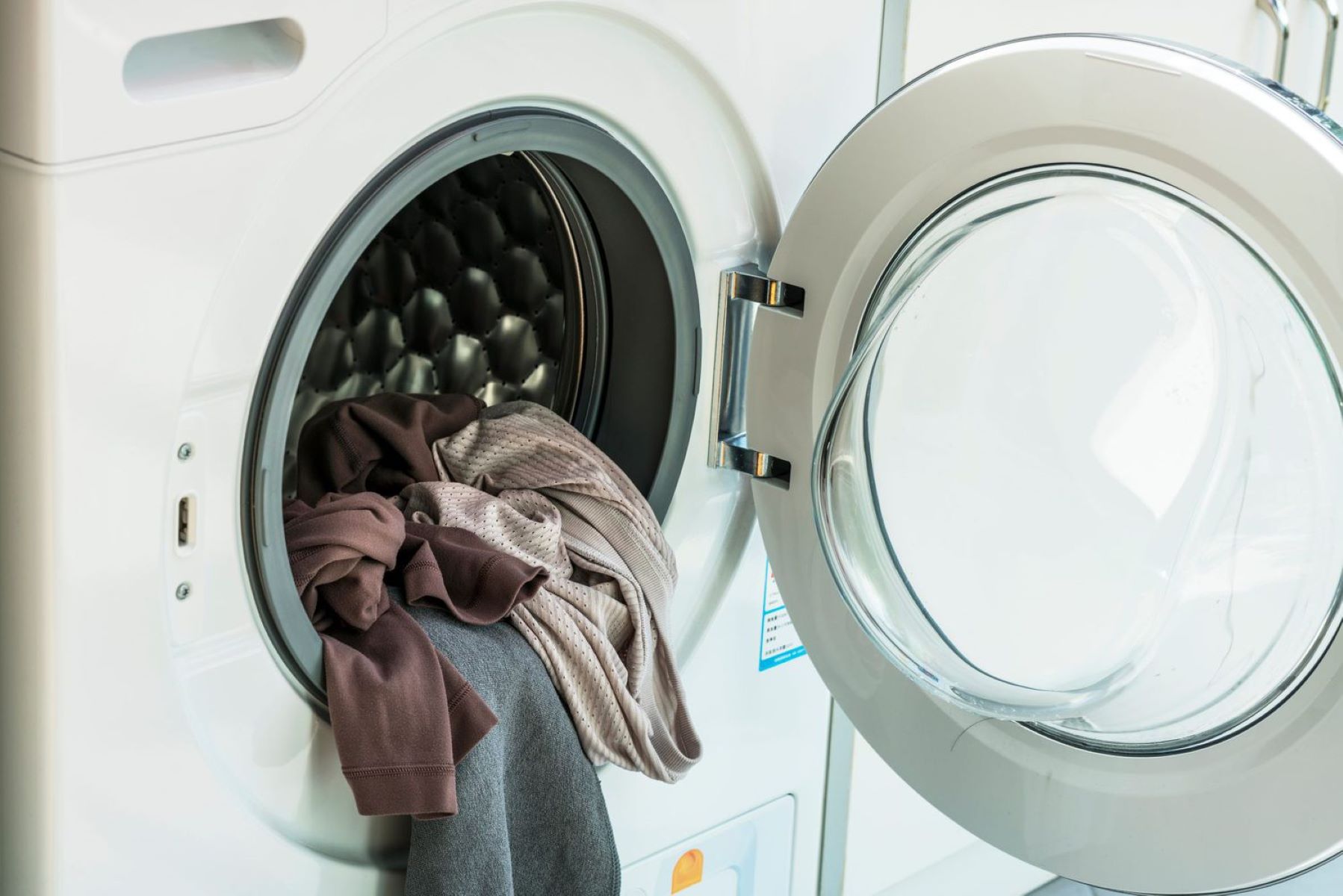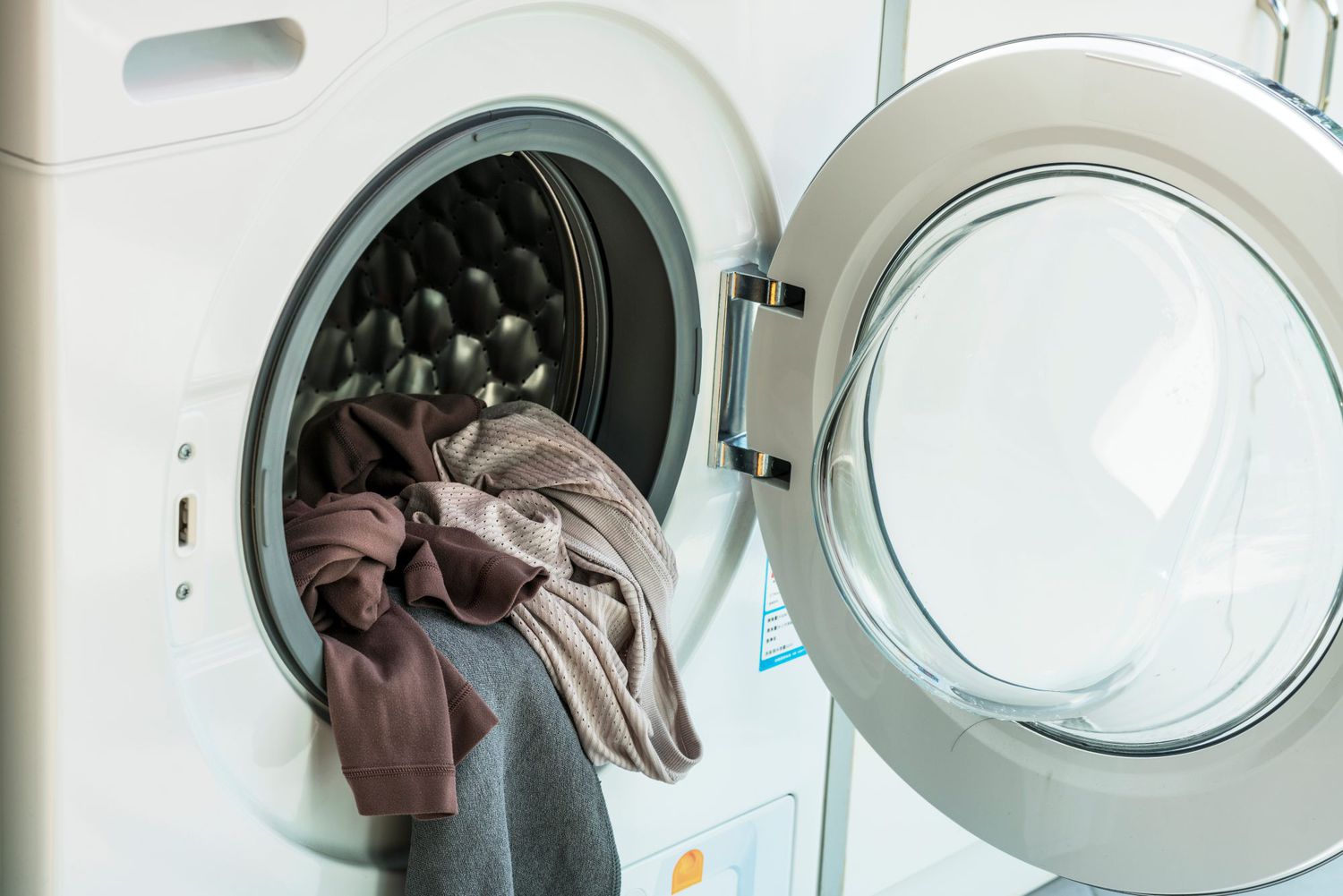

Featured
What Do Hang Cleans Workout
Modified: March 2, 2024
Looking to add more power and explosiveness to your workouts? Discover the benefits of hang cleans and how they can enhance your strength training routine. Featured exercise for maximizing performance.
Introduction
When it comes to strength training exercises, there are numerous options to choose from. One exercise that often gets overlooked, but shouldn’t be, is the hang clean. Hang cleans are a compound movement that engages multiple muscle groups and offers a wide range of benefits. Whether you’re a seasoned athlete or a fitness enthusiast looking to switch up your routine, incorporating hang cleans into your workout regimen can be a game-changer.
In this article, we will explore the ins and outs of hang cleans, from what they are and the muscles they target, to the benefits they provide and the proper technique to execute them. We will also discuss common mistakes to avoid, different variations of hang cleans, and how to incorporate them into your workout routine. Lastly, we will provide safety precautions and tips to ensure you get the most out of this exercise without risking injury.
Hang cleans, also known as hang power cleans, are a variation of the clean exercise. They involve lifting a barbell from a “hang” position, which means starting with the barbell at the mid-thigh, rather than from the floor. The explosive movement of the exercise involves quickly transitioning from the hang position to a full standing position while generating power from the hips, legs, and upper body. This makes hang cleans an excellent exercise for developing explosive power, strength, and coordination.
One of the key features of hang cleans is that they engage multiple muscle groups simultaneously. This compound movement targets the muscles in the lower body, including the quadriceps, hamstrings, glutes, and calves. Additionally, the upper body muscles, such as the shoulders, traps, and forearms, are also heavily involved in executing the exercise. By working both the lower and upper body, hang cleans provide a comprehensive and efficient full-body workout.
So, why should you consider incorporating hang cleans into your workout routine? The benefits are plenty. Hang cleans improve power, strength, and explosiveness, making them particularly beneficial for athletes involved in sports like weightlifting, football, and basketball. They also enhance overall muscle development, helping you build lean muscle mass and increase muscular endurance. In addition, hang cleans improve coordination, balance, and flexibility, which are crucial for performing well in various physical activities. Furthermore, incorporating hang cleans into your routine can boost your metabolism, burn calories, and contribute to weight loss or maintenance.
Now that we have discussed the importance of hang cleans and their benefits, let’s dive into the technique and execution of this exercise to ensure you perform it correctly and maximize its effectiveness.
Hang Cleans: What They Are
Hang cleans are a dynamic exercise that involves lifting a barbell from a “hang” position, which means starting with the barbell at the mid-thigh level. It is a variation of the clean exercise and is commonly performed in weightlifting, powerlifting, and strength training workouts. Hang cleans require a combination of explosiveness, strength, and coordination, making them a highly effective compound movement.
The movement begins with the lifter gripping the barbell with an overhand grip, hands slightly wider than shoulder-width apart. The starting position is a “hang” position, where the lifter stands upright with the barbell resting against their upper thighs. The knees should be slightly bent, and the hips pushed slightly back, similar to a quarter squat position.
Once in the hang position, the lifter initiates the movement by explosively extending the hips, knees, and ankles while simultaneously shrugging the shoulders. This generates upward momentum, allowing the lifter to quickly lift the barbell and raise it towards their shoulders, transitioning into a front rack position. The movement is completed by catching the barbell on the shoulders in a deep squat position or returning to a standing position, depending on the desired variation.
Hang cleans are often compared to the power clean, which starts from the floor instead of the hang position. While both exercises involve similar movements and target the same muscle groups, hang cleans place more emphasis on explosiveness and power due to the shortened range of motion. This makes hang cleans a popular choice for athletes looking to improve their vertical jump, sprinting speed, and overall power output.
It is important to note that hang cleans require proper technique and form to ensure effectiveness and minimize the risk of injury. Beginners should start with lighter weights and focus on mastering the movement pattern before progressing to heavier loads.
Now that we understand what hang cleans are and how they differ from other clean variations, let’s explore the specific muscles that are targeted during this exercise.
Muscles Targeted in Hang Cleans
Hang cleans are a compound exercise that engages multiple muscle groups throughout the body. By incorporating hang cleans into your workout routine, you can effectively target and strengthen several key muscle groups simultaneously.
1. Lower Body Muscles: Hang cleans primarily target the muscles in the lower body, specifically the quadriceps, hamstrings, glutes, and calves. The explosive movement of extending the hips, knees, and ankles during the lifting phase activates these muscles, promoting strength, power, and muscular development.
2. Upper Body Muscles: While hang cleans are known for their impact on the lower body, they also engage various upper body muscles. The shoulders, traps, and forearms work synergistically to maintain grip on the barbell and control its movement as it transitions from the hang position to the front rack position.
3. Core Muscles: Hang cleans require a strong and stable core to provide a solid foundation for generating power and transferring force to the upper and lower body. The muscles in the abdomen, obliques, and lower back play a crucial role in maintaining proper posture and stability throughout the movement.
4. Hip Muscles: The hip muscles, including the hip flexors and hip abductors, are actively involved in the explosive extension of the hip during hang cleans. These muscles contribute to generating power and driving the upward movement of the barbell.
5. Grip Strength: Gripping the barbell during hang cleans requires significant grip strength. As a result, the muscles in the forearms and hands are continuously engaged to maintain a secure hold on the barbell throughout the exercise.
By targeting multiple muscle groups simultaneously, hang cleans provide a time-efficient and effective way to build overall strength, power, and muscular development. Moreover, the activation of these muscle groups can translate to improved athletic performance and functional movement patterns.
Now that we understand the muscles targeted in hang cleans, let’s delve into the numerous benefits that this exercise offers.
Benefits of Hang Cleans
Hang cleans offer a wide range of benefits for individuals of all fitness levels. Whether you’re an athlete looking to improve your performance or someone seeking to enhance your overall strength and power, incorporating hang cleans into your workout routine can be highly advantageous.
1. Improved Power and Explosiveness: Hang cleans are a highly explosive movement that requires a rapid and forceful extension of the hips, knees, and ankles. By consistently performing hang cleans, you can develop explosive power, which is crucial for athletic activities such as sprinting, jumping, and throwing. The ability to generate power quickly can lead to improved performance in sports and activities that require explosive movements.
2. Enhanced Full-Body Strength: As a compound exercise, hang cleans engage multiple muscle groups simultaneously. The lower body muscles, including the quadriceps, hamstrings, glutes, and calves, are targeted during the explosive lifting phase. The upper body muscles, such as the shoulders, traps, and forearms, are actively involved in controlling the movement and maintaining proper form. By working multiple muscle groups at once, hang cleans promote overall strength development and muscular balance.
3. Increased Muscle Mass and Definition: The combination of heavy resistance and explosive movements in hang cleans can stimulate muscle growth and development. By consistently challenging your muscles with hang cleans, you can build lean muscle mass and enhance muscle definition. This is particularly beneficial for those looking to improve their physique or achieve a more toned and sculpted appearance.
4. Enhanced Athletic Performance: Due to their focus on power, strength, and coordination, hang cleans can have a significant impact on athletic performance. The explosive nature of the exercise mimics the demands of various sports, making it an effective conditioning tool for athletes. Improved power and strength can translate into increased sprinting speed, jumping ability, agility, and overall athletic performance.
5. Improved Coordination and Body Awareness: Hang cleans require proper coordination and body awareness to execute correctly. The coordinated effort of the lower body, upper body, and core muscles helps develop a stronger mind-muscle connection, allowing for more efficient movement patterns. This improved coordination can transfer to various daily activities and sports, enhancing overall performance and reducing the risk of injury.
6. increased caloric expenditure: Hang cleans are a high-intensity exercise that requires a significant amount of effort and energy. Performing hang cleans regularly can elevate your heart rate and increase caloric expenditure, making it an effective addition to a weight loss or weight management program.
Incorporating hang cleans into your workout routine can lead to numerous benefits, including improved power, full-body strength, muscle growth, enhanced athletic performance, better coordination and body awareness, and increased caloric expenditure. Now that we understand the benefits of hang cleans, let’s move on to the proper technique and execution of this exercise.
Technique and Execution of Hang Cleans
To perform hang cleans effectively and safely, it is crucial to master the proper technique and execution. Follow these steps to ensure you get the most out of this exercise:
1. Starting Position: Stand with your feet shoulder-width apart and grasp the barbell with an overhand grip, hands slightly wider than shoulder-width apart. The barbell should rest against your upper thighs, with your knees slightly bent and your hips pushed back. Maintain a straight back and engage your core for stability.
2. First Pull: Begin the movement by explosively extending your hips, knees, and ankles, simultaneously shrugging your shoulders. This explosive movement generates upward momentum, propelling the barbell off your thighs and moving it towards your shoulders.
3. Second Pull: As the barbell rises, continue the upward momentum by pulling your body under the barbell while maintaining an upright torso. Keep your arms relaxed and your elbows high. The goal is to bring the barbell to the front rack position, resting on the front of your shoulders while your elbows are pointed forward.
4. Catch and Stand: Once the barbell reaches the front rack position, quickly drop under the barbell and catch it on your shoulders in a deep squat position. Your thighs should be parallel to the ground or slightly below. Maintain an upright and stable posture throughout the catch and stand up by extending your hips and knees. Take a moment to stabilize the weight before returning to the starting position.
5. Lowering the Barbell: To complete one repetition, carefully lower the barbell back to the starting position by reversing the movement. Control the descent and ensure the barbell returns to the hang position at the mid-thigh level. Repeat the exercise for the desired number of repetitions.
It is important to note that proper form and technique are paramount for maximizing the benefits of hang cleans and reducing the risk of injury. Start with lighter weights and focus on mastering the movement pattern before progressing to heavier loads. Pay close attention to your body’s alignment and make adjustments as needed, such as maintaining a straight back, engaging the core, and keeping your elbows high during the movement.
Now that we have covered the technique and execution of hang cleans, let’s address some common mistakes to avoid to ensure you perform the exercise correctly and safely.
Common Mistakes and How to Avoid Them
While hang cleans can be a highly effective exercise, there are some common mistakes that people often make when performing them. By being aware of these mistakes and taking steps to avoid them, you can ensure that you’re performing hang cleans correctly and safely. Here are some common mistakes and how to avoid them:
1. Using Too Much Weight: One of the most common mistakes is using too much weight, compromising form and technique. It is important to start with a weight that allows you to maintain proper form throughout the exercise. Gradually increase the weight as you become more comfortable and confident with the movement.
2. Not Fully Extending the Hips: Failing to fully extend the hips during the explosive phase of the movement can lead to a loss of power and diminish the effectiveness of the exercise. Focus on explosively extending the hips, knees, and ankles to generate maximum power and force.
3. Rounding the Back: Allowing the back to round during hang cleans can increase the risk of injury, particularly to the lower back. Keep your back straight and maintain a neutral spine throughout the movement. Engage your core muscles to provide stability and support.
4. Pulling with the Arms: Hang cleans should primarily be driven by the lower body, specifically the hips and legs. Avoid relying too much on your arms to lift the barbell. Instead, focus on using the power generated from the lower body to initiate the movement and guide the barbell to the front rack position.
5. Rushing Through the Movement: Proper execution of hang cleans requires control and precision. Avoid rushing through the exercise and sacrificing form for speed. Maintain a controlled tempo and focus on each phase of the movement, from the first pull to the catch and stand.
6. Neglecting Proper Wrist Position: During hang cleans, it’s important to maintain a proper wrist position. Avoid allowing the wrists to drop, as this can lead to unnecessary strain. Keep the wrists firm and aligned with the forearms throughout the exercise.
By being mindful of these common mistakes and making an effort to avoid them, you can perform hang cleans with proper form and technique. This will not only maximize the benefits of the exercise but also minimize the risk of injury.
Now that we have addressed the common mistakes, let’s explore some variations of hang cleans that allow for additional variability and target specific muscle groups.
Variations of Hang Cleans
While the traditional hang clean is a highly effective exercise, there are several variations that you can incorporate into your workout routine to add variety, target specific muscle groups, or challenge yourself in different ways. Here are a few variations of hang cleans:
1. Hang Power Clean: The hang power clean is a slightly modified version of the traditional hang clean. In this variation, the lifter catches the barbell in a higher position, typically above parallel or even at the hip crease. It requires explosive power and focuses on the lower body muscles, particularly the quadriceps and glutes.
2. Hang Clean and Press: The hang clean and press combines the benefits of hang cleans with an overhead press. After completing the hang clean, instead of catching the bar on the shoulders, you smoothly transition into an overhead press, extending your arms fully overhead. This variation targets the shoulders, triceps, and upper back muscles in addition to the lower body muscles.
3. Hang Clean High Pull: The hang clean high pull emphasizes the explosive movement of the hips and shrug. After completing the second pull of the hang clean, instead of catching the barbell in the front rack position, you continue to pull the barbell upwards, bringing it closer to the chest or even to the chin level. This variation primarily targets the traps, shoulders, and upper back, while also engaging the lower body muscles.
4. Hang Clean from Blocks: Performing hang cleans from blocks involves starting the exercise with the barbell resting on blocks or elevated platforms, rather than from the mid-thigh position. This variation allows for a greater range of motion and provides an opportunity to work on explosiveness and power from a different starting position.
5. Single-arm Hang Clean: The single-arm hang clean is an excellent variation for targeting each side of the body individually. Rather than gripping the barbell with both hands, you hold a dumbbell or kettlebell in one hand and perform the hang clean with the same explosive movement. This variation challenges your core stability and coordination, while still engaging the lower and upper body muscles.
These are just a few examples of the many variations of hang cleans available. You can mix and match these variations or create your own variations based on your specific goals and preferences. However, it is essential to maintain proper form and technique when performing these variations to ensure effectiveness and minimize the risk of injury.
Now that we have explored some variations of hang cleans, let’s move on to how you can incorporate them into your workout routine.
How to Incorporate Hang Cleans into Your Workout Routine
Hang cleans are a versatile exercise that can be incorporated into various workout routines and training programs. Whether you’re looking to build strength, power, or improve athletic performance, here are a few ways to incorporate hang cleans into your workout routine:
1. Full-Body Strength Training: Include hang cleans as a compound movement in your full-body strength training sessions. Perform multiple sets of hang cleans, focusing on using challenging weights with proper form and technique. Combine hang cleans with other compound exercises such as squats, deadlifts, bench presses, and rows to target multiple muscle groups and promote overall strength development.
2. High-Intensity Interval Training (HIIT): Add hang cleans to your HIIT workouts to elevate the intensity and maximize calorie burn. Alternate between periods of high-intensity hang cleans and active recovery exercises, such as jumping jacks or burpees. This combination will not only strengthen your muscles but also improve cardiovascular fitness.
3. Circuit Training: Incorporate hang cleans into circuit training routines. Design a circuit that includes a variety of exercises targeting different muscle groups, such as lunges, push-ups, planks, and pull-ups. Include a set of hang cleans in each round of the circuit, performing them with proper form and intensity. Circuit training provides a time-efficient way to improve strength, endurance, and overall fitness.
4. Sports-Specific Training: If you participate in a specific sport or activity that requires explosive power and strength, incorporate hang cleans into your sports-specific training. Focus on performing hang cleans with explosive power, mimicking the movements and demand of your sport. This will help improve your performance in activities such as basketball, football, volleyball, and track and field events.
5. Strength and Power Emphasis Days: Dedicate specific training days to focus on strength and power development. Use hang cleans as the primary exercise for these sessions and perform multiple sets of heavy hang cleans. This will help increase your maximum strength and power output over time.
Remember to warm up adequately before performing hang cleans and listen to your body’s limitations. Start with lighter weights and gradually increase the load as you gain confidence and improve your technique. If you are new to hang cleans, consider seeking guidance from a qualified fitness professional to ensure proper form and technique.
Now that you have some ideas on how to incorporate hang cleans into your workout routine, let’s move on to important safety precautions and tips.
Safety Precautions and Tips for Hang Cleans
While hang cleans can be highly beneficial, it is essential to prioritize safety during your workouts. Incorporate these safety precautions and tips to ensure a safe and effective hang clean session:
1. Warm Up Properly: Before starting your hang clean workout, take the time to warm up your body. Perform dynamic stretches, such as leg swings, arm circles, and hip rotations, to increase your range of motion and prepare your muscles for the exercise. This will help reduce the risk of injury and enhance your performance.
2. Start with Light Weights: If you are new to hang cleans or have not performed them in a while, begin with lighter weights to focus on mastering proper technique and form. Gradually increase the weight as you become more comfortable and confident with the movement. Never sacrifice form for heavier weights.
3. Maintain Proper Form and Technique: Proper form and technique are key to performing hang cleans safely and effectively. Keep your back straight, engage your core, and avoid rounding your back. Use the power of your lower body to drive the movement, rather than relying on your arms. Pay attention to your body’s alignment and make adjustments as needed.
4. Use a Controlled Tempo: Avoid rushing through the movement of hang cleans. Maintain a controlled tempo throughout the exercise, ensuring that each phase – from the first pull to the catch and stand – is executed with precision and control. This will help you maintain proper form and reduce the risk of injury.
5. Gradually Increase Weight and Intensity: As you develop strength and proficiency in hang cleans, you can gradually increase the weight and intensity of your workouts. However, always listen to your body and avoid overloading yourself with weight that compromises your form or puts excessive stress on your joints and muscles.
6. Focus on Recovery and Rest: Hang cleans can be demanding on your body, and it is crucial to prioritize recovery and rest. Give your muscles time to repair and rebuild by including rest days in your training schedule. Adequate sleep, proper nutrition, and hydration also contribute to your overall recovery and performance.
7. Seek Guidance and Coaching: If you are new to hang cleans or wish to improve your technique, consider seeking guidance from a qualified fitness professional or coach. They can provide valuable insights, correct any form issues, and ensure that you’re performing hang cleans safely and effectively.
Remember, safety should always be a priority during your exercise routine. By following these safety precautions and tips, you can minimize the risk of injury and maximize the benefits of hang cleans.
Now that we have discussed safety precautions and tips, let’s wrap up this article with a summary of what we have learned about hang cleans and their benefits.
Conclusion
Hang cleans are a dynamic and versatile exercise that offer numerous benefits for individuals of all fitness levels. By incorporating hang cleans into your workout routine, you can improve power, strength, and explosiveness while targeting multiple muscle groups simultaneously. The proper technique and execution of hang cleans are vital to ensure effectiveness and reduce the risk of injury.
We explored the importance of hang cleans and their impact on various muscle groups, such as the lower body, upper body, and core. The benefits of hang cleans include improved power, full-body strength, enhanced muscle mass and definition, increased athletic performance, improved coordination and body awareness, and increased caloric expenditure. These benefits make hang cleans a valuable exercise for athletes, fitness enthusiasts, and anyone looking to achieve their fitness goals.
To perform hang cleans correctly, it is crucial to maintain proper form and technique, avoiding common mistakes such as using too much weight, rounding the back, or rushing through the movement. By understanding these mistakes and taking necessary precautions, you can execute hang cleans safely and effectively.
Additionally, we discussed variations of hang cleans that allow for additional variability and target specific muscle groups. These variations, such as the hang power clean, hang clean and press, and single-arm hang clean, provide options to tailor your workout routine according to your preferences and goals.
Incorporating hang cleans into your workout routine can be done through full-body strength training, high-intensity interval training (HIIT), circuit training, sports-specific training, or strength and power emphasis days. Adjust the frequency and intensity based on your fitness level and goals.
Remember to prioritize safety by warming up properly, starting with lighter weights, and gradually progressing. Focus on maintaining proper form, employing a controlled tempo, and allowing for proper recovery and rest between sessions. Seeking guidance from a fitness professional or coach can also be beneficial, especially when establishing a solid foundation and refining your technique.
In conclusion, hang cleans are a challenging yet rewarding exercise that engages multiple muscle groups and offers a myriad of benefits. By incorporating hang cleans into your workout routine with proper form and technique, you can enhance your overall strength, power, and athletic performance. So, grab a barbell, master the technique, and reap the benefits of hang cleans in your fitness journey.









